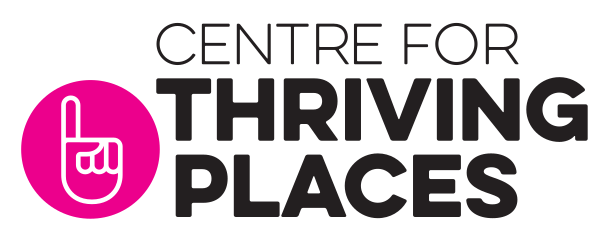Last week, Centre for Thriving Places co-hosted the launch of associate Sam Wren-Lewis’ new book, The Happiness Problem: Expecting better in an uncertain world. At the event Sam and Liz Zeidler, CEO, took part in an engaging discussion on some of the themes raised by the book. This blog picks up on some of the ideas discussed.
We tend to approach happiness as though we know exactly what it is that will make us happy. But what if we’re missing something? Or what if this approach isn’t nuanced enough to account for the unexpected? What if, in trying to pursue happiness, we undermine our own ability to experience it? These are some of the radical questions asked by Sam Wren-Lewis’ new book, The Happiness Problem.
The Happiness Problem makes a compelling case for letting go of lists of goals and achievements and moving towards a more complex framework of understanding wellbeing. But how can this apply to wellbeing economics, which is so closely tied to quantifying and measuring? Measuring what matters has been a key tool for making the case that another economy is possible so the idea that lists, or more measurement, may not be the answer is a challenging one.
For ten years Centre for Thriving Placeshave been working to get wellbeing measurement on the map. Now that it’s firmly on the political agenda, it’s important that working towards wellbeing doesn’t just become a box-ticking activity – it really has to mean something. In other words, whilst measurement is an important first step to change, change on the ground is always more complex than it appears.
Here are our deas for meeting the challenge head on:
Recognise the complexity of wellbeing
Wellbeing isn’t reducible to one key metric. It’s a complex idea that involves both immaterial, material and environmental factors, both subjective and objective. People’s wellbeing changes over time and in response to different conditions, and is impacted by other’s experiences in their community. That’s why we designed the Thriving Places Index to take into account a broad range of factors- it measures both things that are individual (e.g. people’s health levels and mortality) and the conditions for wellbeing in general (such as community cohesion and amount of green space).
Remember that wellbeing is radical
Despite wellbeing’s ‘fluffy’ appearance, much of the wellbeing economics movement seeks to make sure that economies are meeting key human needs – for adequate shelter, safety, health care, equality and opportunity. The fact that such deep inequality continues to exist in wealthy countries such as the UK should be an alarm bell sounding out that GDP is not an adequate proxy for wellbeing; despite the fact that economies across the world continue to grow, people are still living in poverty. It’s a reflection of the continued dominance of classical economic thinking that we are still having to make the case that people should be adequately housed, employed, and cared for and that an economy that doesn’t provide this for all isn’t fit for purpose.
Engage everyday people
Happiness and wellbeing aren’t easy to define concepts – and the way that academics talk about wellbeing may not be how people describe their own sense of how they are doing. For this reason it’s crucial that wellbeing measurements involve and engage people, helping them to understand their own wellbeing. The language of wellbeing measurement should be clear and understandable – and not obfusticate the fact that people already know what they need to get on in life.
Although we’re all different and have different expectations and hopes for our lives, different cultural contexts and different challenges, we all understand why happiness is valuable and why it’s a worthwhile goal. That has been a key learning from Centre for Thriving Places’ ten years of campaigning and community work – that the best way to find out what makes people happy is to ask them.
Focus on both the material and immaterial
It’s clear that inequality means that some people have greater levels of control over their material circumstances. But this doesn’t mean that it’s only the material that matters in life. All across the country new projects are springing up that recognise this – that an economy that only seeks to provide the material basis for life ignores the fact that we know that a fulfilling life is always more than its material components.
As well as having their basic needs met, people also need an economic system that provides opportunities to experience joy, creativity and spontaneity, connect with others, engage in meaningful work, culture and politics and get out in nature. It’s not enough to just survive – what we’re working for is a world where everyone has a chance to thrive.
Take a place-based approach
If people don’t agree with what’s happening in the places where they live, they’re unlikely to respond positively, even to policies or programs designed to improve wellbeing. There’s no one-size-fits-all solution to ‘solve’ wellbeing and each place has its own strengths and challenges. It’s crucial that wellbeing interventions are grounded in specific places and that they build on what’s already going well.
The Thriving Places Index framework offers a new way to think about and change policy emphasis, in particular if you are seeking to move to a more interconnected model of local prosperity with sustainability and fairness at its core. If you’re interested in working with the Thriving Places Index in your then please get in touch with wren@centreforthrivingplaces.org



Comments are closed.